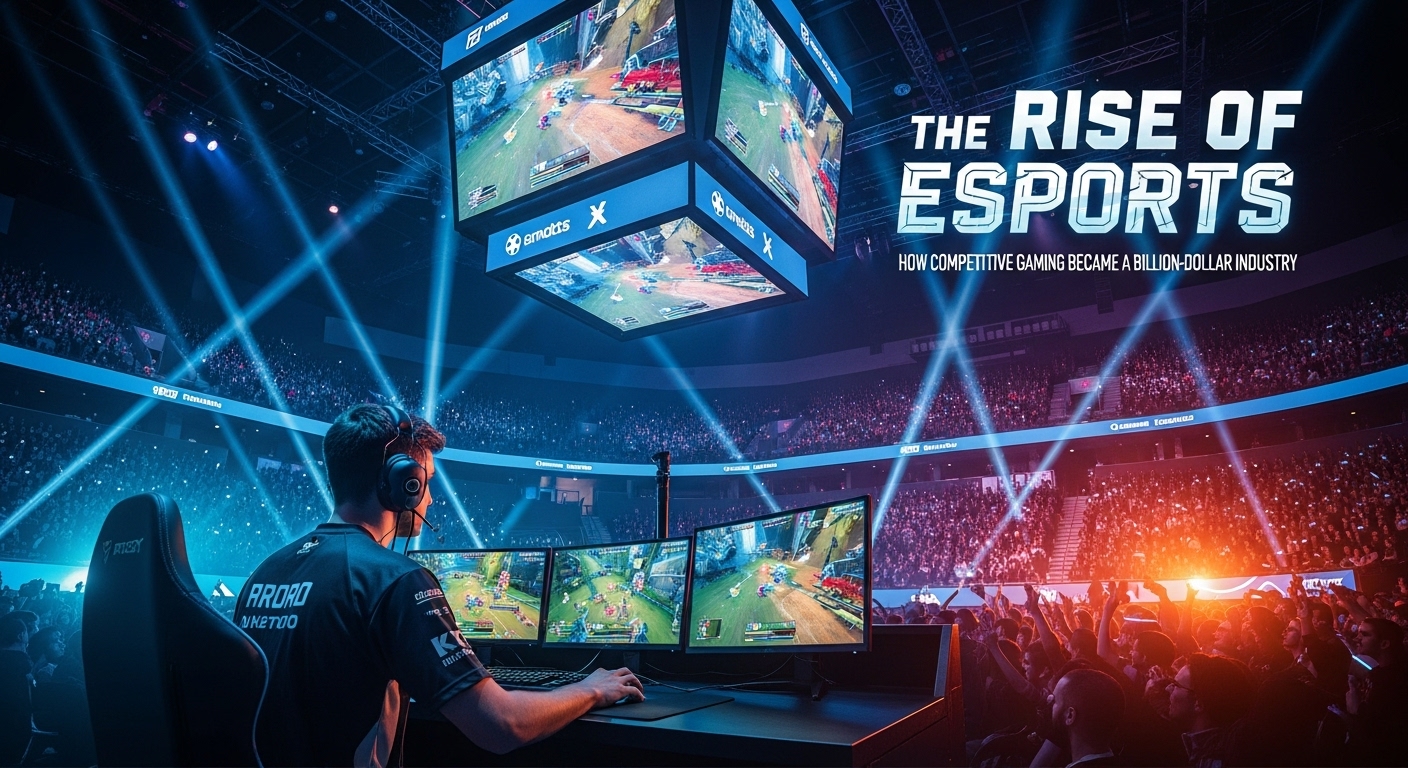Not long ago, competitive gaming was considered a niche hobby, confined to internet cafes, underground tournaments, and passionate fans gathering in modest venues. Today, it’s a global juggernaut: a billion-dollar industry with professional leagues, multimillion-dollar prize pools, and a fanbase that rivals traditional sports in size and fervor.
So, how did we get here? The rise of esports is a story of technology, community, business innovation, and a shifting cultural perspective on gaming.
From Arcades to Arenas
The seeds of esports were planted in the arcades of the 1980s and early PC LAN parties of the 1990s. Games like Quake, StarCraft, and Counter-Strike introduced the idea of competitive play beyond just high scores. Early tournaments like the Cyberathlete Professional League and the World Cyber Games were precursors to what would later explode into massive international events.
With the growth of broadband internet and improved PC performance in the early 2000s, online multiplayer games began to thrive. Titles like League of Legends, Dota 2, and Call of Duty didn’t just offer online play—they created entire ecosystems around competition, community, and streaming content.
The Streaming Revolution
Perhaps the biggest catalyst for the rise of esports was the advent of live streaming platforms. Services like Twitch and YouTube Gaming allowed fans to watch their favorite players and teams live from anywhere in the world. This democratized viewership and created new celebrities from behind keyboards and controllers.
Streaming removed the gatekeeping typically associated with television broadcasts. Anyone could become a fan—or even a participant. The ability to interact with the streamers directly through chat also added a level of intimacy and engagement that traditional sports couldn’t offer.
Major Investments and Big Money
As viewership exploded, so did sponsorships and investments. Tech giants, sports franchises, and even celebrities began pouring money into esports. Brands ranging from Red Bull to Mercedes-Benz recognized the marketing value of reaching younger, digital-native audiences.
Prize pools soared, with tournaments like The International and Fortnite World Cup offering tens of millions in winnings. Esports organizations started to mirror traditional sports teams with structured management, coaching staff, analysts, and even physical training facilities.
This influx of money also led to the formation of professional leagues. Franchised leagues like the Overwatch League and the League of Legends Championship Series formalized the competitive structure, making careers in esports more viable and stable.
Global Appeal, Local Flavor
Esports is unique in its global reach. While traditional sports often have regional dominance, esports transcends borders. South Korea became a mecca for professional gaming early on, particularly in games like StarCraft. China, Europe, and North America each developed strong competitive scenes in various titles.
What sets esports apart is its community-driven growth. Fans don’t just watch—they create memes, build analysis tools, host podcasts, and organize amateur tournaments. This grassroots participation has been essential in sustaining interest and innovation within the scene.
Cultural Acceptance and Future Growth
Esports is no longer something “kids do in their rooms.” It’s broadcast on mainstream TV, featured in college scholarship programs, and discussed in the boardrooms of global corporations. Some schools have even introduced esports into their curriculum, recognizing its value in developing teamwork, strategic thinking, and digital literacy.
With mobile gaming on the rise and virtual reality waiting in the wings, the next phase of esports could be even more immersive and accessible. The line between traditional sports and competitive gaming continues to blur, and for the digital generation, esports may very well be their preferred form of competition and entertainment.
Final Thoughts
The rise of esports is not just a trend—it’s a paradigm shift. What started as casual gaming among friends has evolved into a professionally run, globally celebrated industry. And if current trajectories are any indication, the esports boom is far from over.



